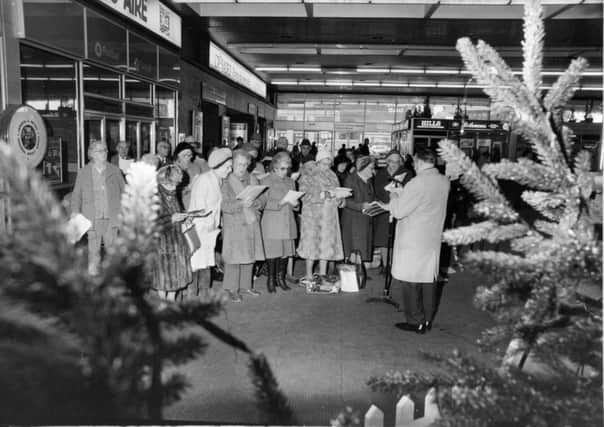The day when the IRA brought terror to festive shoppers


AT lunch time on December 17, 1983, London’s fashionable Knightsbridge streets were heaving.
It was the last Saturday before Christmas and one of the busiest shopping days of the year as people looked to pick up those last minute gifts. In Harrods department store they were doing a roaring trade with shoppers soaking up the festive atmosphere.
Advertisement
Hide AdAdvertisement
Hide AdBut just before 1.30pm the relaxed mood turned to panic and dread as a huge blast ripped through the crowded streets outside. A car bomb had exploded killing six people, including three police officers, and leaving a further 91 injured. The following day the IRA admitted planting the bomb but said it had given a clear warning about the explosion.
The bombing shocked people around the world and in a statement the IRA admitted the “civilian casualties” were regrettable. However, the Home Secretary Leon Brittan accused them of hypocrisy and said the statement should be treated with “contempt.”
Among those killed by the blast were PC Jane Arbuthnot, who was due to get married the following month, and Phil Geddes, a 24 year-old journalist with the Daily Express.
In its comment pages, the Yorkshire Post was unequivocal in its condemnation of the attack accusing the IRA of “depravity and unmitigated evil.” “Let Harrods be the codeword for a new Anglo-Irish offensive against these unspeakable savages who kill and maim in the hope of bringing down both British and Irish democracy.”
Advertisement
Hide AdAdvertisement
Hide AdPrince Charles and the Princess of Wales visited some of the victims in hospital, while the Prime Minister Margaret Thatcher launched a fierce attack on the IRA during a visit to Northern Ireland just before Christmas.
She consoled the widows and families of murdered and injured members of the Royal Ulster Constabulary and was besieged by well-wishers during a walkabout in Newtownards, County Down.
Normally Mrs Thatcher’s trips to Northern Ireland were low key affairs, but moved by the welcome she received she took the opportunity to speak out. “None of us can forget the inhuman, contemptuous – and contemptible – work of the terrorists,” she said. “It will not achieve their objective. We do not surrender to bullets and bombs.”
Three days after the car bomb had blown out windows and left the street outside looking like a war zone, Harrods was open again, 1,000 members of staff having worked round the clock to get the store ready and its owners insisting they wouldn’t be defeated by acts of terrorism.
Advertisement
Hide AdAdvertisement
Hide AdAlthough the Harrods bombing dominated the news, the countdown to the festive season continued and the Yorkshire Post’s Lynda Brown looked to the past for culinary inspiration. She encouraged readers to try something different coming up with ‘Almond soup’, the unappetizing-sounding ‘Pig in Jelly’ and a ‘Sweetmeat pudding.’
“Although at first sight the dishes may sound unfamiliar,” she wrote, “they are, in fact, neither fancy nor foreign but were the sort of traditional dishes we were enjoying 200 years ago.
“The food itself is simple, readily adapts to today’s tastes and in the words of Elizabeth Raffald, Yorkshire’s most famous 18th Century writer, is ‘exceedingly good and nice.’”
With hearty food like this you need something to wash it all down with and one drinks columnist offered no less than 10 cocktails to keep the spirits up over the festive period. Among them was one called “Green Christmas” consisting of a shot of gin, brandy and crème de menthe, along with a dash of lemon juice and topped with crème de menthe cherries just for good measure.
Advertisement
Hide AdAdvertisement
Hide AdMeanwhile, comedian Eric Morecambe was getting ready for the Morecambe and Wise Christmas special by taking time out to clown around in front of the cameras.
Over the years the Morecambe and Wise Show had become essential viewing at Christmas and at its peak attracted a staggering 27 million people – one of the highest in British TV history.
The 1983 Christmas show featured an array of special guests including Gemma Craven, Felicity Kendal and Nigel Hawthorne. Sadly this proved to be their last show before Morecambe’s untimely death six months later, but it offered a last hurrah for a comic genius who brought a welcome ray of sunshine to our lives.
Tomorrow it’s 1993 and hopes rise for peace in Northern Ireland.